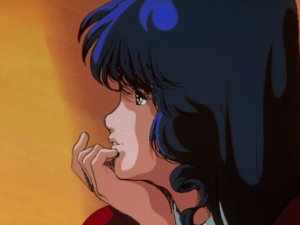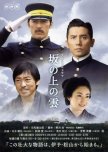“A very small country is about to become a civilized nation.”
Each episode of Saka no Ue no Kumo (“Clouds Above the Slope”) opens with these optimistic words. An NHK special, this high-budget historical spans a period during the Meiji era which includes the Sino-Japanese and Russo-Japanese wars. But despite a clear aim to educate and remind viewers such events ever took place, imparting the spirit of the times to viewers holds chief importance. One learns what the Japanese people felt at the time: a reluctant deference to western knowledge and shame at requiring it, national pride and burgeoning hope, the excitement and fear which accompanies the dawn of a new era.
We follow the stories of three historical figures, brothers Akiyama Yoshifuru (cavalry legend) and Akiyama Saneyuki (maritime hero), as well as their childhood friend Masaoka Shiki (writer and pioneer of the haiku). The three grew up together in the same small town of Matsuyama, yet matured into men whose unique talents would help raise their country in the eyes of the world. Saka no Ue no Kumo utilizes their unique perspectives to tell the story of Japan in its infancy as a modernizing country, while also touching on these incredible lives. Most of the political and military history comes to us via the brothers and their contemporaries, while art and culture channel through the eyes of the writer alone. Viewers may be surprised to see how many international figures and events influenced Japan at this time. An important name includes Czar Nicholas II (the last Romanov and father to that poor Anastasia so many of us have been acquainted with thanks to apocryphal relations).
What an ambitious objective! Unfortunately, it is an objective that goes unmet in some areas—despite valiant effort. One issue is that this drama attempts to tell too many individual stories at once; so much focus ought to be put on the Akiyama brothers (and is), and as a result other plotlines seem to interrupt the narrative flow. One major example is that of Masaoka Shiki. Despite his status as a literary legend and particular childhood friend of Akiyama Saneyuki, I felt there was very little the writers could tell us through him. He may have been better served as a supporting character, especially since his presence so rarely had an impact on the others past a certain point. When humor was injected into the series, it was often done in an almost awkwardly goofy way which did not suit the somewhat austere tone. Otherwise the plot is as strong as to be expected from any mile-stone celebrating special from the NHK. The fascinating subject matter often speaks for itself, with little pressing need for overt embellishment. Please be warned, however, that there is a definite pro-Japanese spin to most depictions.
Military buffs ought to be pleased with the major battle sequences. Despite occasionally being a touch short, choreography and quality CG are used in concert to create a realistic effect. It surprised me how well done this aspect was, especially for television.
When names like Abe Hiroshi, Kagawa Teruyuki, and Kanno Miho grace a cast listing, one instantly expects quality performances. For the most part, viewers shall not be disappointed in such expectations. Abe Hiroshi meets his usual standard with masterful poise, emerging as the ramrod strict (though oddly warm) Akiyama Yoshifuru. I was particularly impressed with his portrayal during war-time and wondered how much equestrian training he might have acquired. Motoki Masahiro is a name not immediately mentioned above, but perhaps my absolute favorite actor in Saka no Ue no Kumo. Naval history has always been a personal favorite topic of mine, so naturally I gravitated more toward Akiyama Saneyuki. Despite this early bias, I also luckily met an actor with natural charisma and an almost chameleon skin. In early scenes, Motoki-san portrays a wild and strong-willed youth whose intelligence is being wasted in Matsuyama; as the drama continues, we witness changes responsibility, command, and war effect in this boisterous personality.
On the other hand, we have the ever-talented Kagawa Teruyuki—who seems to have been miscast as Masaoka Shiki. The younger years were hard on Kagawa-san, who neither looked especially young nor performed as such without a great deal of exaggeration. In the second half of the series, once the character settles, viewers are finally treated to the acting skills Kagawa-san is so beloved for. A minor note: much of the western cast were dreadfully hammy, or wield their “native languages” less than fluently. This can be quite distracting at times, considering how important many of the international figures are to the story.
Saka no Ue no Kumo can pride itself on the strength of its soundtrack. Legendary composer Joe Hisashi contributed his talents to this portion of the drama, and it shows. The main theme of the series overflows with the kind of hope and strength this series tries so hard to capture. A personal favorite track must be Stand Alone, vocalized in angelic tones by Sarah Brightman (of The Phantom of the Opera fame).
Was this review helpful to you?























